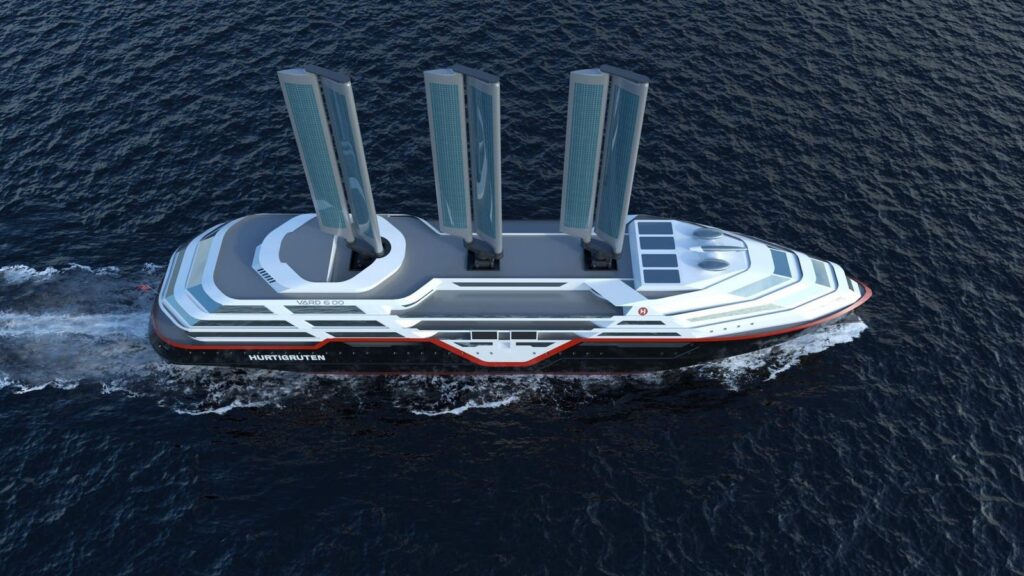
Shipping Goes Back To The Future – With Sails
In a bold move to reduce emissions and shift away from traditional fossil fuels, the shipping industry is embracing an ancient technology with a modern twist – sailing once more. Yes, you read that correctly! Shipbuilders are reviving the use of sails on commercial vessels to help slash carbon output.
The Financial Times recently reported on Hurtigruten’s ambitious plan to launch its first zero-emission ship along Norway’s coastline by 2026. This innovative vessel will utilize wind power and be powered entirely by green methanol. The company has also ordered eight larger ships that will run on the same eco-friendly fuel, as well as 20 dual-fuel vessels equipped with methanol and liquefied gas dual-fuel propulsion systems.
Maersk, a Danish shipping giant, is also taking steps to reduce its carbon footprint. They’ve been operating their large container ship, Laura Maersk, since 2023 using only green methanol, and have recently placed an order for eight more ships that will run on the same clean energy source. Furthermore, they’re constructing 20 dual-fuel vessels that can utilize both methanol and liquefied gas.
While wind-powered sailing may seem like a step back in time, it’s a forward-thinking approach to mitigate the enormous carbon emissions generated by the industry. According to the International Maritime Organisation (IMO), global CO2 emissions from shipping currently total around 940 million tonnes annually – a staggering amount that must be addressed if we’re to meet our climate goals.
The reintroduction of sails is just one aspect of this shift towards more sustainable operations. The IMO has set an ambitious goal to reduce these emissions by at least 40% by 2030, and it seems companies like Maersk are committed to achieving this target.
Other cutting-edge solutions include advanced hull designs that improve hydrodynamics, specialized coatings to minimize water resistance, air lubrication systems that create a layer of bubbles to reduce drag and fuel use, as well as more efficient propellers or fully electric propulsion vessels. It’s clear that the industry is working tirelessly to innovate and adapt to changing environmental regulations.
Wind Wings are likely to play a critical role in these efforts, and it’s encouraging to see major players like Cargill and BAR Technologies collaborating on large-scale projects. The recent installation of WindWings – massive wing sails measuring up to 37.5 meters tall – onto the deck of the Pyxis Ocean demonstrates the potential for significant fuel savings.
John Cooper, CEO of BAR Technologies, shared a remarkable statistic: “In near optimum sailing conditions during an open sea voyage, the Pyxis Ocean achieved fuel savings of 11 tonnes per day.” This is a crucial step towards reducing our reliance on fossil fuels and decreasing the devastating impact that the industry has on our planet’s well-being.
The shipping industry must continue to push the boundaries of innovation to achieve its ambitious carbon reduction targets. It’s heartening to see leaders like Maersk, Cargill, and BAR Technologies taking bold action to mitigate their environmental footprint.
As we move forward, it will be crucial for all stakeholders – governments, companies, and individuals alike – to collaborate and drive meaningful change.
Source: www.forbes.com


